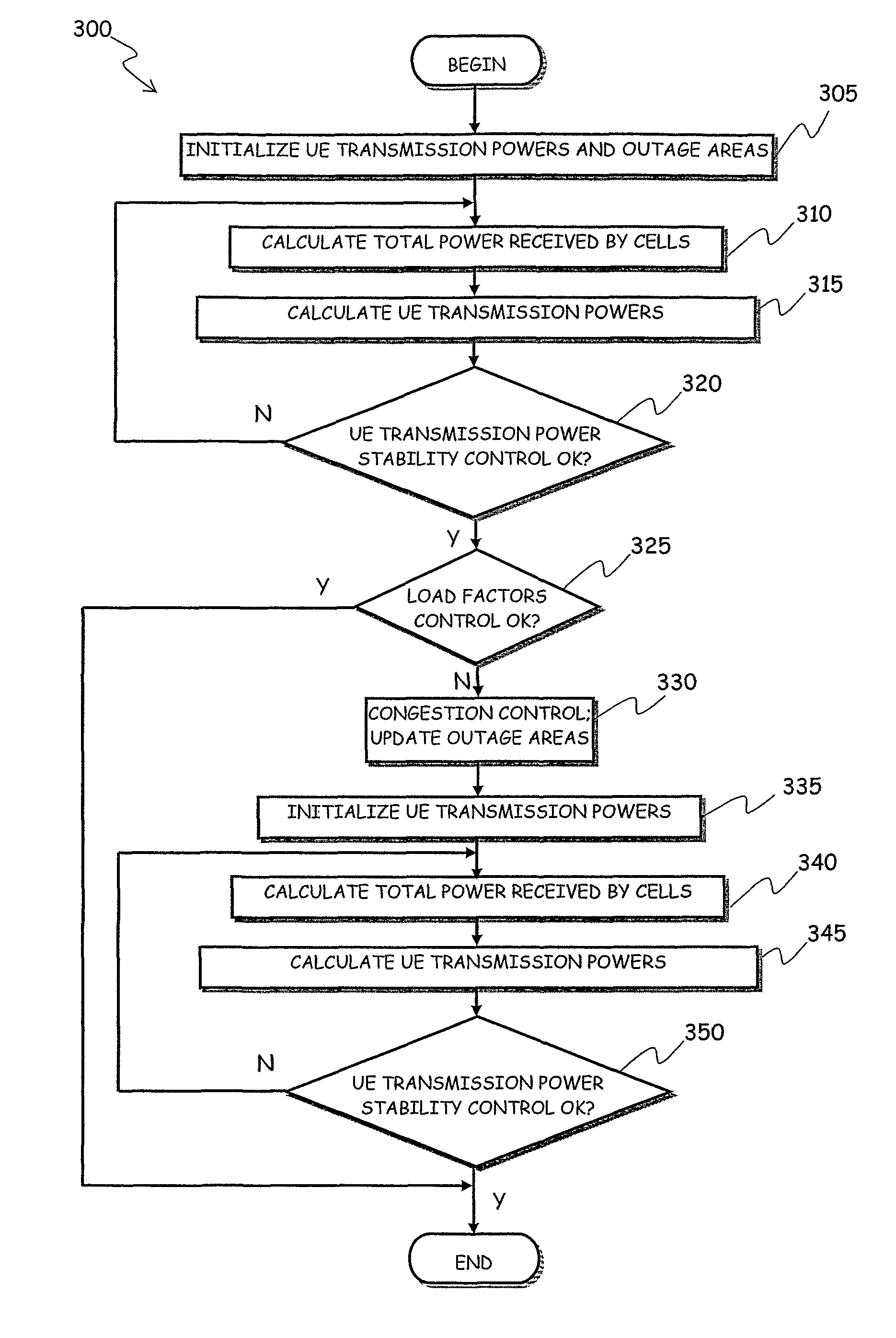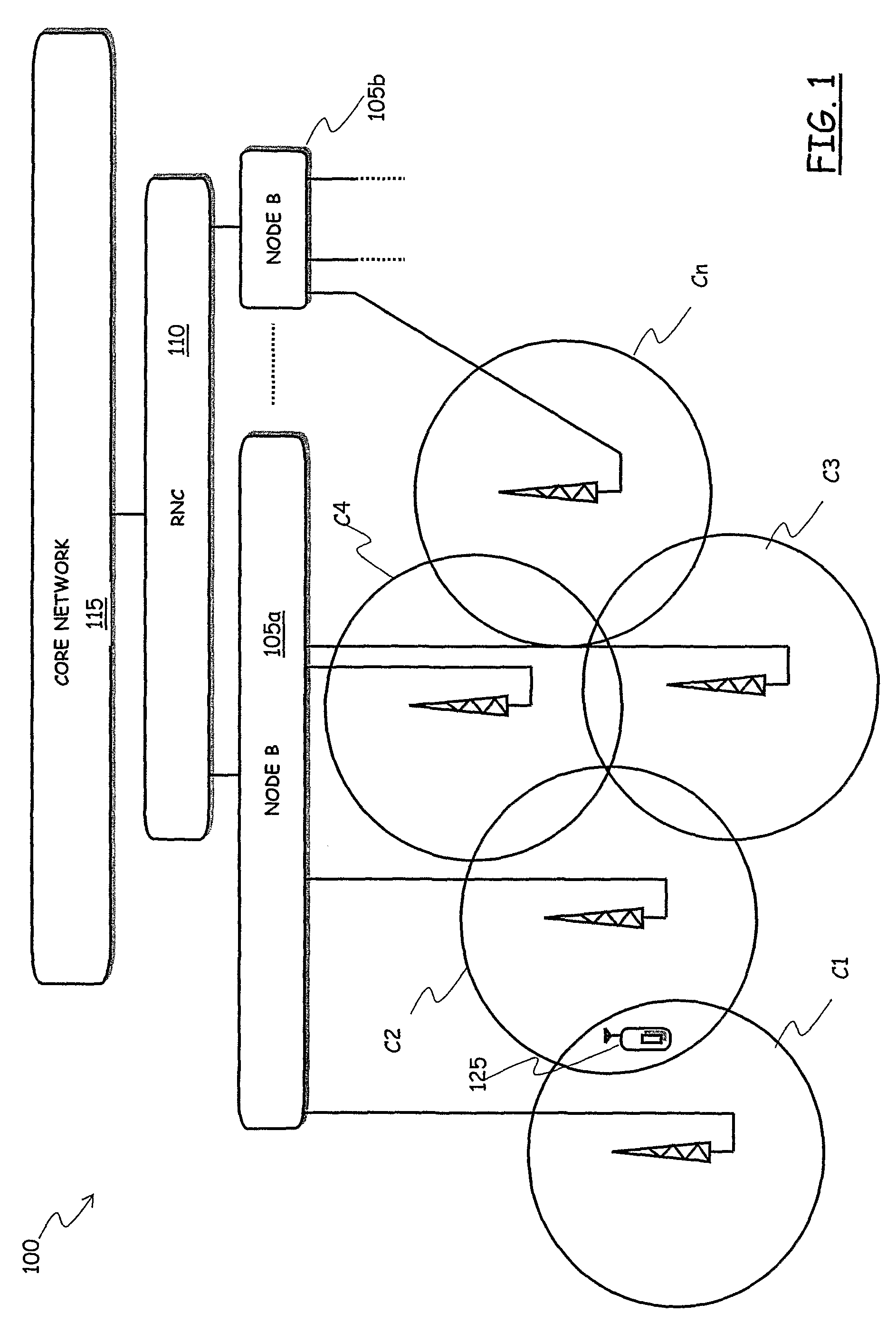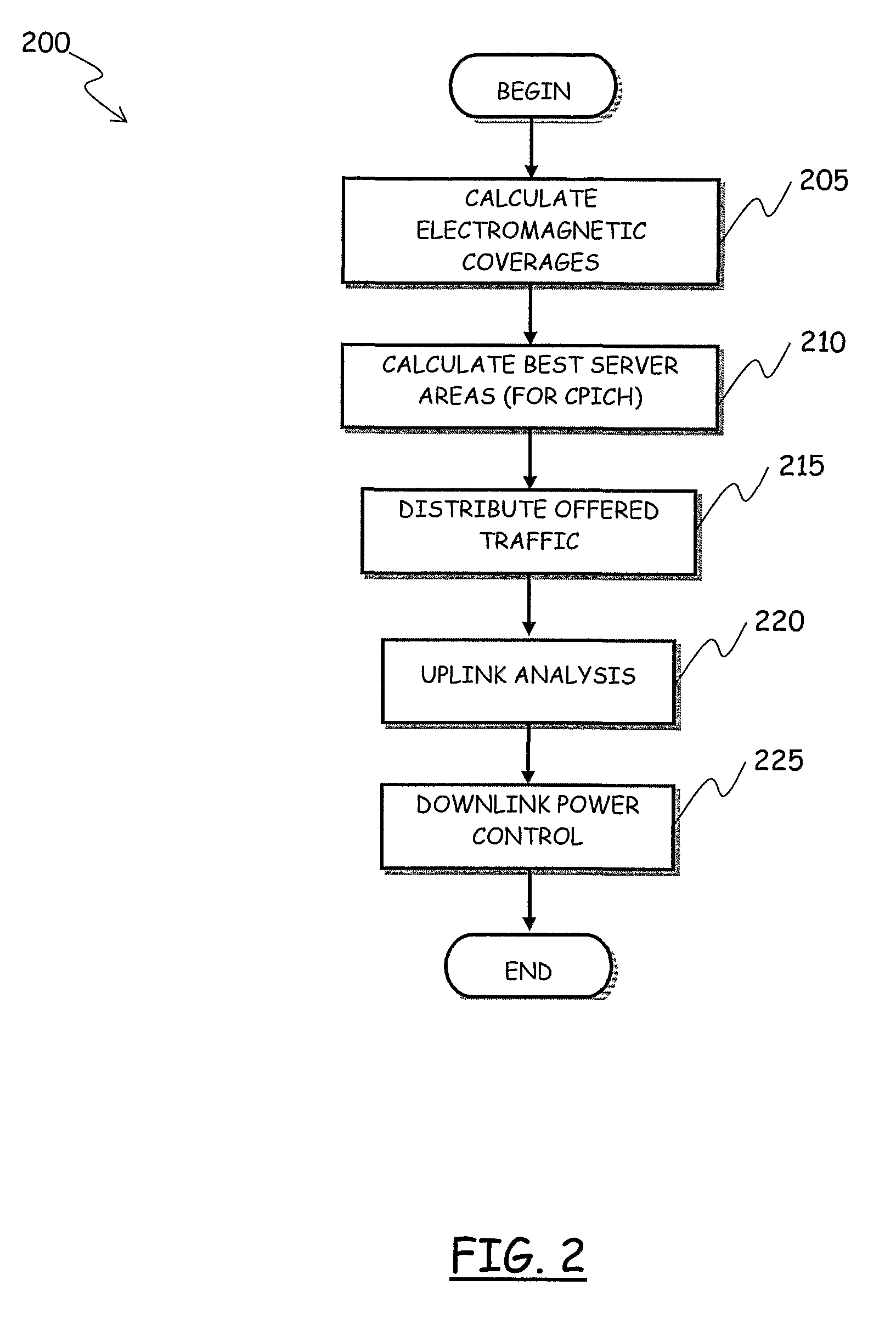Method for planning a cellular mobile telecommunications network
a cellular mobile and telecommunications network technology, applied in the field of telecommunications, can solve the problems of weak optimization, affecting the efficiency of the whole planning method, and weak limitation of the known planning method
- Summary
- Abstract
- Description
- Claims
- Application Information
AI Technical Summary
Benefits of technology
Problems solved by technology
Method used
Image
Examples
Embodiment Construction
[0062]Referring to the drawings, in FIG. 1 there is schematically depicted a portion of a CDMA network, particularly a UMTS network under planning, the network portion being intended to provide cellular mobile communications capability within a given geographic area.
[0063]The UMTS network portion under consideration, identified globally by reference numeral 100, comprises a plurality of cells C1, C2, C3, C4, . . . , Cn (schematically depicted as circles), each one having a respective area coverage (the area of the circles). The cells C1, C2, C3, C4, . . . , Cn are each one made up of a plurality of pixels, i.e., they are the set of geographic points covered and served by the radio electromagnetic signal irradiated by a respective cell's BRS, schematized in the drawing as an antenna.
[0064]Usually, groups of three to six cells (on average) are managed by a network entity called “Node B”, such as the Node Bs 105a and 105b in the drawing (where, merely by way of example, it is assumed t...
PUM
 Login to View More
Login to View More Abstract
Description
Claims
Application Information
 Login to View More
Login to View More - R&D
- Intellectual Property
- Life Sciences
- Materials
- Tech Scout
- Unparalleled Data Quality
- Higher Quality Content
- 60% Fewer Hallucinations
Browse by: Latest US Patents, China's latest patents, Technical Efficacy Thesaurus, Application Domain, Technology Topic, Popular Technical Reports.
© 2025 PatSnap. All rights reserved.Legal|Privacy policy|Modern Slavery Act Transparency Statement|Sitemap|About US| Contact US: help@patsnap.com



